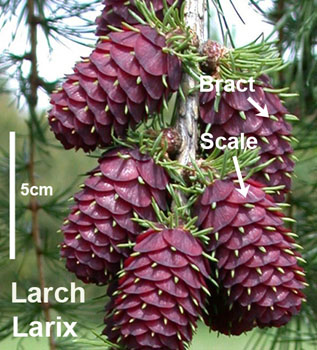Browse "Things"
-
Article
Language Policy in Canada
Language policy is comprised of a body of theory, principles, laws, programs and measures designed to manage one or more languages in a country. In monolingual societies, language policy is usually concerned with promoting an approved, standardized grammar of the common language. In bilingual or multilingual societies, it is intended to manage situations in which two or more languages are in contact and/or conflict, and to enhance the use and status of certain languages over others. Language policy in Canada has been designed to manage historical relationships among multiple languages – notably French, English and Indigenous languages - and their various communities. While it has evolved over time, Canadian language policy has not always been marked by positive or just measures.
"https://d2ttikhf7xbzbs.cloudfront.net/media/media/40e047e3-6acc-474f-b2c6-76d673b789bc.jpg" // resources/views/front/categories/view.blade.php
https://d2ttikhf7xbzbs.cloudfront.net/media/media/40e047e3-6acc-474f-b2c6-76d673b789bc.jpg
-
Timelines
Languages Policy
This timeline includes events and debates related languages policy in Canada.
"https://d2ttikhf7xbzbs.cloudfront.net/media/media/ec03c6b4-05de-4971-afa1-e6ef64df4fb9.jpg" // resources/views/front/categories/view.blade.php
https://d2ttikhf7xbzbs.cloudfront.net/media/media/ec03c6b4-05de-4971-afa1-e6ef64df4fb9.jpg
-
Article
L’Anse aux Meadows
L’Anse aux Meadows is the site of an 11th-century Norse outpost at the tip of Newfoundland’s Great Northern Peninsula. Arguably the location of Straumfjord of the Vinland sagas, it is believed to be the first European settlement in North America. L’Anse aux Meadows was designated a National Historic Site of Canada in 1968 and a UNESCO World Heritage Site in 1978. Today, it is the site of a popular interpretive centre and ongoing archeological research.
"https://d2ttikhf7xbzbs.cloudfront.net/media/media/ef56b649-2750-47b7-8402-422d71ee395e.jpg" // resources/views/front/categories/view.blade.php
https://d2ttikhf7xbzbs.cloudfront.net/media/media/ef56b649-2750-47b7-8402-422d71ee395e.jpg
-
Article
Larch
Larch is the Latin name for conifers of genus Larix of the pine family (Pinaceae). All 10-12 species of Larix grow in the Northern Hemisphere; 3 are in Canada.
"https://d2ttikhf7xbzbs.cloudfront.net/media/media/d2ffc2d7-27c2-48f4-a5c3-3adc13de3065.jpg" // resources/views/front/categories/view.blade.php
https://d2ttikhf7xbzbs.cloudfront.net/media/media/d2ffc2d7-27c2-48f4-a5c3-3adc13de3065.jpg
-
"https://development.thecanadianencyclopedia.ca/images/tce_placeholder.jpg?v=e9dca980c9bdb3aa11e832e7ea94f5d9" // resources/views/front/categories/view.blade.php
https://development.thecanadianencyclopedia.ca/images/tce_placeholder.jpg?v=e9dca980c9bdb3aa11e832e7ea94f5d9
-
Article
Laser
Laser (light amplification by stimulated emission of radiation), device used to generate high-intensity light.
"https://d2ttikhf7xbzbs.cloudfront.net/media/media/137f6e93-4a0a-476c-a1e6-83cd14bf20de.jpg" // resources/views/front/categories/view.blade.php
https://d2ttikhf7xbzbs.cloudfront.net/media/media/137f6e93-4a0a-476c-a1e6-83cd14bf20de.jpg
-
Article
Last Post Fund
The Last Post Fund is a nonprofit organization established in 1909. The organization’s mission is to ensure a dignified funeral and burial, as well as a military-style gravestone, to all eligible veterans. The fund is closely linked to Veterans Affairs Canada.
"https://development.thecanadianencyclopedia.ca/images/tce_placeholder.jpg?v=e9dca980c9bdb3aa11e832e7ea94f5d9" // resources/views/front/categories/view.blade.php
https://development.thecanadianencyclopedia.ca/images/tce_placeholder.jpg?v=e9dca980c9bdb3aa11e832e7ea94f5d9
-
Macleans
Latest Gomery Shockers May Not Yield a Spring Election
JUST ABOUT everybody breathlessly described Jean Brault's testimony as explosive.This article was originally published in Maclean's Magazine on April 18, 2005
"https://development.thecanadianencyclopedia.ca/images/tce_placeholder.jpg?v=e9dca980c9bdb3aa11e832e7ea94f5d9" // resources/views/front/categories/view.blade.php
https://development.thecanadianencyclopedia.ca/images/tce_placeholder.jpg?v=e9dca980c9bdb3aa11e832e7ea94f5d9
-
Macleans
Latimer Convicted, Again
This article was originally published in Maclean’s magazine on November 17, 1997. Partner content is not updated. Robert Latimer watches in detached amusement as a kitten plays with his shoelaces. It is the day after a second jury has found him guilty of second-degree murder, and he is relaxing with half a dozen relatives on the deck in front of his modest farmhouse in Wilkie, Sask.
"https://development.thecanadianencyclopedia.ca/images/tce_placeholder.jpg?v=e9dca980c9bdb3aa11e832e7ea94f5d9" // resources/views/front/categories/view.blade.php
https://development.thecanadianencyclopedia.ca/images/tce_placeholder.jpg?v=e9dca980c9bdb3aa11e832e7ea94f5d9
-
Macleans
Latimer Sentenced
A hundred and seventy years ago in England, about 200 crimes carried the death penalty. People were publicly hanged for offences ranging from murder to the theft of food or pocket change.This article was originally published in Maclean's Magazine on December 15, 1997
"https://development.thecanadianencyclopedia.ca/images/tce_placeholder.jpg?v=e9dca980c9bdb3aa11e832e7ea94f5d9" // resources/views/front/categories/view.blade.php
https://development.thecanadianencyclopedia.ca/images/tce_placeholder.jpg?v=e9dca980c9bdb3aa11e832e7ea94f5d9
-
Macleans
Laumann Fails Drug Test
This article was originally published in Maclean’s magazine on April 3, 1995. Partner content is not updated. She did what just about everybody else would have done: she had a cold, so she took a pill. But Silken Laumann is not everybody else. The 30-year-old rower is one of Canada's best-loved amateur athletes, an Olympic medallist and a top contender at the Summer Games in Atlanta next year.
"https://development.thecanadianencyclopedia.ca/images/tce_placeholder.jpg?v=e9dca980c9bdb3aa11e832e7ea94f5d9" // resources/views/front/categories/view.blade.php
https://development.thecanadianencyclopedia.ca/images/tce_placeholder.jpg?v=e9dca980c9bdb3aa11e832e7ea94f5d9
-
Article
Laurentia
Laurentia, the name given by geologists to a landmass that, between 600 and 500 million years ago, embraced eastern North America, most of Europe and much of Asia. Writers have also used the word "Laurentia" as their name for a utopian Québec.
"https://d2ttikhf7xbzbs.cloudfront.net/media/media/6e559a82-fa39-4e67-8505-cd188e83d9d0.jpg" // resources/views/front/categories/view.blade.php
https://d2ttikhf7xbzbs.cloudfront.net/media/media/6e559a82-fa39-4e67-8505-cd188e83d9d0.jpg
-
Article
Laurentian Thesis
Laurentian Thesis, an influential theory of economic and national development set forth by several major English Canadian historians from the 1930s through the 1950s.
"https://d2ttikhf7xbzbs.cloudfront.net/media/media/c49e83e8-3877-4052-832c-ab1fdd5e4f2b.jpg" // resources/views/front/categories/view.blade.php
https://d2ttikhf7xbzbs.cloudfront.net/media/media/c49e83e8-3877-4052-832c-ab1fdd5e4f2b.jpg
-
Article
Laurentian University
Laurentian University, in Greater Sudbury, Ont, was founded in 1960; instruction is in both French and English. Laurentian University dates from 1913 when the Roman Catholic Collège du Sacré-Coeur was established in Sudbury. In 1957 it became the University of Sudbury.
"https://d2ttikhf7xbzbs.cloudfront.net/media/media/0bbc7423-f097-4fac-8e20-9663a9419422.jpg" // resources/views/front/categories/view.blade.php
https://d2ttikhf7xbzbs.cloudfront.net/media/media/0bbc7423-f097-4fac-8e20-9663a9419422.jpg
-
Editorial
Sir Wilfrid Laurier: the Politics of Compromise
The following article is an editorial written by The Canadian Encyclopedia staff. Editorials are not usually updated.
"https://d2ttikhf7xbzbs.cloudfront.net/media/media/e90e0bdd-a0d0-4752-8a94-52946de0b4d9.jpg" // resources/views/front/categories/view.blade.php
https://d2ttikhf7xbzbs.cloudfront.net/media/media/e90e0bdd-a0d0-4752-8a94-52946de0b4d9.jpg
